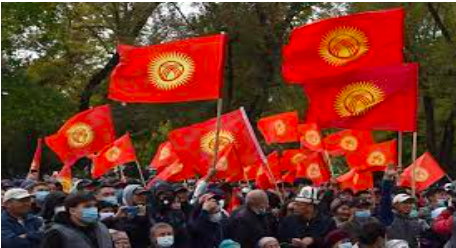Of shared musical heritage
Posted on : November 11, 2020Author : AGA Admin

The most prominent example of shared musical heritage between peoples of the South Caucasus is that of Sayat Nova, an eighteenth century Armenian bard (known as ashough in Armenian and aşıq in Azerbaijani) who composed songs in Armenian, Azerbaijani, and Georgian. His works in Azerbaijani are either unknown or hidden from the public. This is testament to the nationalisation of Sayat Nova, in which his legacy of multilingual artistic production has been written out and he is instead presented as a solely Armenian musician. His music and melodies were inspired by a range of folk musical traditions in the region. They were notated centuries after his death during an Armenian national musicological project- part of why he became to be seen as exclusively Armenian in the future. Songs would be passed on from village to village, leaving behind little trace of where they came from or what the “original” version was. For instance, the Armenian song Mejlumi pes is said to have been composed by Sayat Nova; but there is an equivalent Azerbaijani folk song called Yar bizə qonaq gələcək with exactly the same melody.
There are many examples of such songs whose melodies are identical, but are performed in differing musical styles and sung with different lyrics and titles. In certain cases, the composer of the song is known in one or both of the languages. However, this does not represent sufficient proof as to who actually composed the melody. A musician living in an ethnically-mixed town or village or a bard who travels from region to region may pick up melodies and transpose them with lyrics in their mother tongue. For instance, the songs Alvan varder and Zov Gisher in Armenian are known to be composed by Gusan Sheram, a famous bard from Gyumri. Süsən Sünbül and Gözəlim Sənsən are the Azerbaijani equivalents of these songs. Although located in Armenia today, the region historically had a mixed Armenian and Azerbaijani population- so trying to figure out the “original” is probably impossible. But as the bard tradition has been transformed and institutionalized in each country, it is increasingly difficult to find folk bards who perform a multilingual repertoire. The memory of these bards is lost; but the songs live on as testament.
There are several shared songs and dance melodies with no named author shared by both peoples. In some cases, they bear the same names, including: Sari Aghjik/Sarı Gəlin, Aman Tello, Shalaxo, and Enzeli. Sari Aghjik/Sarı Gəlin (“Golden Bride”) is a matter of particular controversial debate between Armenians and Azerbaijanis. Not only the melody but also the theme and lyrics are similar in both languages: a man is in love with a girl whom he cannot attain and so wishes for the death of her mother/grandmother. A famous rendition of this song was performed by Iranian musician Hossein Alizadeh and Armenian duduk player Djivan Gasparyan, and was sung in Persian, Azerbaijani and Armenian.Wedding music played by Eastern Armenians and Azerbaijanis also have a common flavour. Dancing tunes are often based on a 6/8 beat: 6 beats with equal duration and stresses on the first and fourth beats, with a particular emphasis on the first. This beat is conducive to forms of shared dances that involve heavy usage of feet movements, such as Shalaxo. As these examples show, the similarities between Armenian and Azerbaijani music include instruments as well, including: dhol/nağara, dap/dəf, kamancha, tar, duduk/balaban, oud, kanon/qanun, shvi/tütək and zurna.
Source: https://ajammc.com/2020/01/26/songs-enemy-armenians-azerbaijanis/




